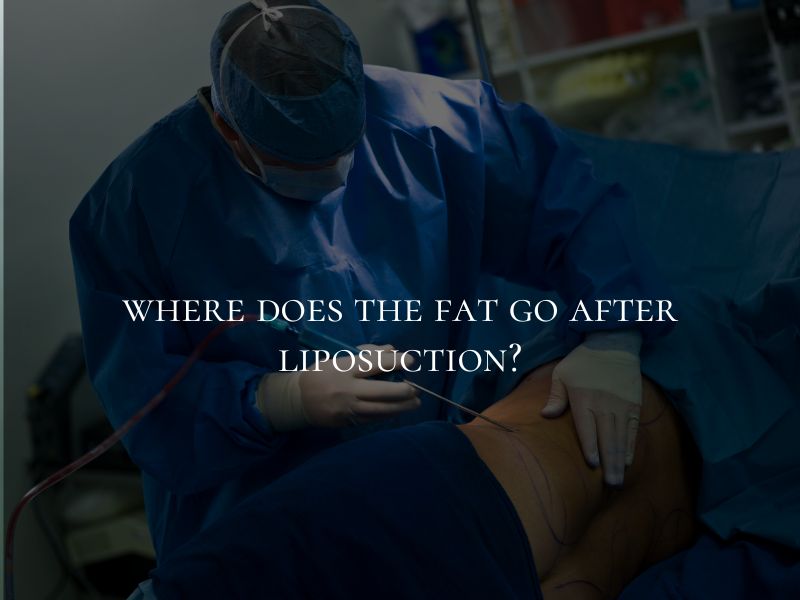
Do they grow back? Will they show up in different areas of the body? These are valid questions, and ones that can be easily answered by a knowledgeable and experienced plastic surgeon such as Dr. Diehl. Here is a bit more information on the liposuction process and what really happens to those fat cells once they are removed.
What is Liposuction?
Liposuction is a popular cosmetic surgery designed to remove unwanted fat deposits, sculpting your body into a smoother, slimmer shape. The procedure is typically performed under general or local anesthesia, depending on the type of liposuction procedure.
Here’s how it works:
- Tumescent Fluid Application: Your surgeon begins by inserting a stainless steel instrument, called an infusion cannula, to inject a tumescent solution into the targeted fatty tissue. This solution contains saline, lidocaine, and epinephrine, which helps reduce bleeding, pain, and bruising during the procedure.
- Fat Removal: Through small incisions, the surgeon uses another cannula attached to a suction device to gently remove the loosened fat. The result? A contoured and refined body shape.
After surgery, you’ll need time to recover at home, with many patients resuming light activities after a week or two.
What is “Laser Liposuction” or SmartLipo?
Laser liposuction is basically the same process, but with two big differences. Most patients having laser liposuction are under local anesthesia only, avoiding the need for general anesthesia. The tumescent and suctioning process is the same, but sandwiched between them, the laser is passed. The laser gives the additional advantages of some improved skin tightening and less bruising (resulting in a more comfortable recovery). Otherwise, The procedure, garment use, and post-operative care are the same.
How Does It Work?
When it comes to managing body fat, the science behind fat cells might surprise you. Understanding how your body works can help explain why liposuction procedure is such an effective solution for targeting those frustrating problem areas.
- Fat Cell Stability in Adulthood: After reaching adulthood, the number of fat cells in your body remains relatively stable.
- Fat Cells and Weight Changes: When you gain or lose weight, the fat cells don’t increase or decrease in number—they simply grow larger or shrink.
- Targeting Stubborn Fat Areas: Certain areas, like the thighs or lower belly (visceral fat and subcutaneous fat), may have more fat cells, making it easier to gain weight there and harder to lose it through diet or exercise alone.
- Spot Reduction is a Myth: You can’t selectively lose fat in specific areas with a healthy diet or exercise; fat loss occurs evenly across all fat cells, even in places you might not want to lose it.
- Why Liposuction Helps: Spot liposuction removes excess fat cells in targeted areas, offering a more proportional and sculpted appearance that diet and exercise alone can’t achieve.
Will My Body Fat Redistribute After Liposuction?
A common misconception about liposuction is that fat will “regrow” in other areas of your body. Let’s clear up the truth:
- Fat Cells Are Permanently Removed: Once fat cells are suctioned out, they’re gone for good.
- Remaining Fat Cells Can Expand: If you gain weight after liposuction, the remaining fat cells in your body (both in treated and untreated areas) can grow larger. This is why maintaining a stable weight post-surgery is crucial.
- Why Weight Maintenance Matters: Without a stable weight, you risk the fat cells that remain expanding in other areas of your body, which can affect your overall shape. By keeping a healthy weight, you can help maintain the results of your liposuction for the long term.

6 Tips to Keep Your Liposuction Results
Liposuction can give you the body contour you’ve been dreaming of, but maintaining those results takes effort. Here are some key tips to help you keep your new shape for the long term:
1. Maintain a Healthy, Balanced Diet: Eating a healthy diet helps keep your weight stable and prevents excessive fat from accumulating in the areas that weren’t treated. Focus on whole foods like vegetables, lean proteins, and healthy fats, while limiting processed foods and sugar.
2. Stay Active: Aim for at least 150 minutes of moderate activity per week. Being active will help maintain your metabolism high and your body toned.
3. Keep Your Weight Stable: The key to preserving your liposuction results is maintaining a steady weight. While you can’t gain weight in the treated areas, weight gain can cause the remaining fat cells in untreated areas to expand. Keeping your weight within a healthy range helps maintain your overall body proportions.
4. Stay Hydrated: Drinking plenty of water helps with fat metabolism and overall skin elasticity. It also supports healthy circulation, which can contribute to a more youthful and toned appearance.
5. Get Enough Sleep: Adequate sleep is key for recovery and weight management. Aim for 7-9 hours each night to keep your metabolism running smoothly.
6. Follow Your Surgeon’s Aftercare Instructions: Your surgeon will provide personalized advice for recovery and maintaining results. This may include wearing compression garments, avoiding certain activities during recovery, and scheduling follow-up appointments to track your progress.
FAQS
Is liposuction painful?
Liposuction is not usually painful during the procedure itself, but you can expect some discomfort and pain after the surgery.
Can fat return to body areas treated by liposuction?
No, many people choose liposuction procedure to remove unwanted fat from specific areas. While the fat removal is permanent, liposuction isn’t a full-body weight-loss solution, and your body can still store fat in other areas afterwards.
What happens to the removed fat after liposuction?
Some people think that removing fat cells from one area causes them to expand in another, but this is not the case. While the treated area will appear slimmer, the fat cells that are removed cannot regenerate or return to your body.
What happens to your body years after liposuction?
Your body will typically maintain the sculpted shape from the procedure for years if you maintain a healthy lifestyle. However, as you age, the natural loss of skin elasticity and muscle tone may gradually affect the results.

How long does the recovery take after liposuction?
Recovery time varies depending on the extent of the procedure and your body. Generally, you can return to light activities within a few days, but more intense exercise should be avoided for at least 4-6 weeks. Full recovery might take several months for the final results to show.
Am I a good candidate for liposuction?
Ideal candidates for liposuction are healthy individuals who are within 30% of their ideal weight, have firm, elastic skin, strong muscle tone, and fat deposits that haven’t responded to diet and exercise. It is not recommended for those with certain health conditions, so a consultation with a qualified surgeon is essential to determine if it’s right for you. Non-smokers and non-vapers are also preferred.
Achieve Your Desired Body Shape with Liposuction
At Diehl Plastic Surgery, we are committed to helping you feel confident and comfortable in your own skin. If stubborn fat deposits are affecting your self-esteem and you’re considering liposuction, call Dr. Diehl at (919) 381-5540 to schedule your personal and private consultation. During your visit, we’ll guide you through the entire process and create a customized treatment plan to help you achieve your body goals and maintain long-lasting results.



